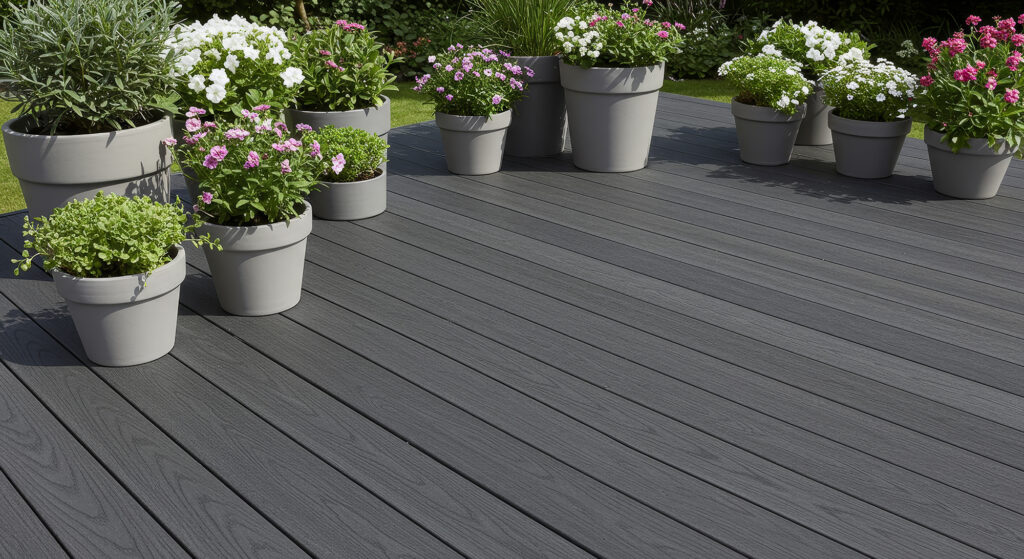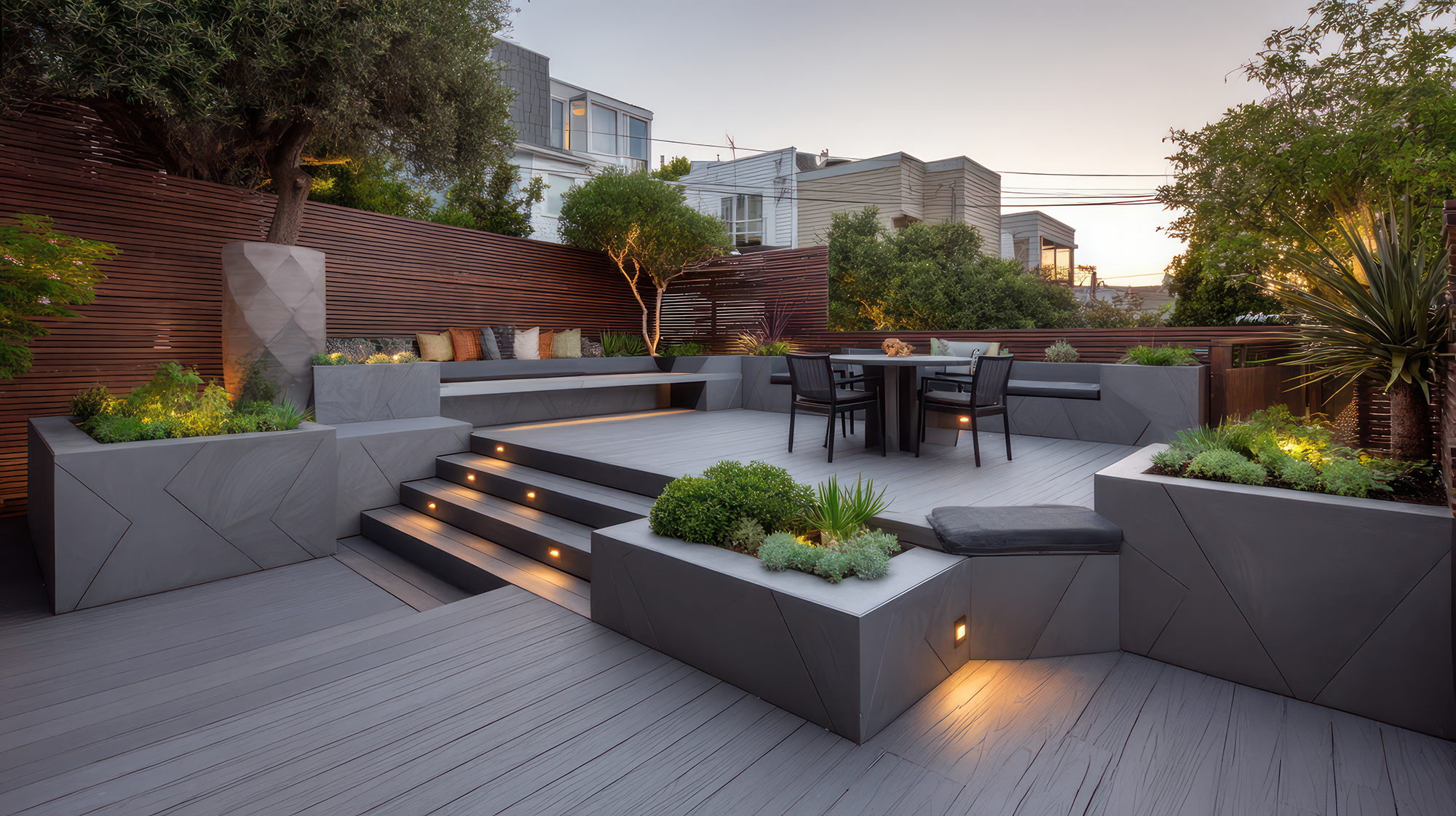Composite Decking vs Timber Decking: Which is Best for Your Garden?
When planning a new deck, one of the first decisions many homeowners face is whether to choose composite decking or traditional timber decking. Both options create a functional and attractive outdoor living space, but there are important differences that can influence your long-term satisfaction. With more people searching for composite decking vs timber decking, it’s clear that the debate is one worth exploring.
At Decking Superstore, we specialise exclusively in composite decking because we believe it offers the best combination of durability, style and value.
However, to give a clear picture, let’s explore the strengths and weaknesses of both materials before explaining why composite decking has become the preferred choice for thousands of homeowners across the UK.
The Appeal of Timber Decking
For decades, timber was the standard material for decking. It offers a natural look that blends seamlessly with garden landscapes. Softwoods such as pine are relatively affordable, while hardwoods like oak or teak can provide a rich, luxurious finish. Many people are drawn to timber for its authentic feel underfoot and its ability to be customised with stains or paints.
That said, timber is a living material, and that comes with challenges. It is porous, which means it absorbs water, leading to swelling, warping and in some cases, rot.
In the damp British climate, timber requires regular maintenance to protect it from the elements. Annual tasks such as sanding, staining, sealing and treating against mould and insects are essential if you want your wooden deck to last.
Over time, this maintenance can be both costly and time-consuming.
The Rise of Composite Decking
Composite decking has emerged as a modern alternative, made from a blend of recycled wood fibres and high-quality polymers. This combination produces a board that mimics the appearance of timber but avoids many of its weaknesses.
Advances in manufacturing have created composite boards with textured surfaces and natural colours that look remarkably similar to real wood, yet they are engineered to remain stable and low maintenance.
Unlike timber, composite decking does not warp, splinter or rot. It is resistant to moisture and insect damage, making it particularly well-suited to the UK’s unpredictable weather.
Once installed, your composite deck needs little more than an occasional wash to keep it looking fresh. This ease of ownership is one of the main reasons so many homeowners are making the switch.

Durability and Lifespan
When comparing composite decking vs timber decking, durability is perhaps the most decisive factor. A timber deck, even when properly cared for, will typically last around 10 to 15 years before it begins to show significant wear. In contrast, composite decking can last 25 years or more with minimal maintenance.
Composite boards are manufactured to resist fading and staining, so they maintain their appearance year after year. With timber, exposure to sunlight and rain quickly leads to fading, cracking and splintering. For families with children or pets, the smooth, splinter-free surface of composite decking is a far safer choice.
Maintenance
Maintenance is often where the two materials differ most clearly. Timber decking requires ongoing attention. Without regular treatment, wood will decay, attract mould and lose its colour. The cost of oils, stains and preservatives adds up, and the labour involved is considerable.
Composite decking, on the other hand, is designed to be virtually maintenance-free. There’s no need for painting, sealing or sanding. A simple wash with soapy water is usually enough to remove dirt and debris. For busy households, this means more time enjoying the garden rather than working on it.
Many people today are also thinking about sustainability when choosing building materials. While timber may seem the greener option at first glance, much depends on sourcing and forest management. Unsustainable logging has contributed to deforestation in some parts of the world, and hardwoods in particular can have a significant environmental footprint.
Composite decking, by contrast, is often made from recycled materials, including reclaimed wood fibres and plastics.
Our ranges prioritise eco-friendly manufacturing processes, helping to reduce waste and extend the life of existing resources. By choosing composite decking, you are investing in a long-lasting product that also supports sustainable practices.
Cost Comparison; Composite Decking vs Timber Decking
The upfront cost of composite decking is typically higher than that of softwood timber. However, it’s important to look beyond the initial purchase. When you factor in the ongoing costs of treating and maintaining timber, as well as the likelihood of earlier replacement, composite decking often proves to be the more economical option in the long run.
A deck should be seen as a long-term investment in your home. Choosing composite means you can enjoy consistent quality and appearance without worrying about constant upkeep or replacement costs.
Style
Timber decking is loved for its natural charm, but modern composite decking has made huge strides in replicating the look and feel of wood. From warm oak tones to rich walnut shades, today’s composite boards offer a wide range of finishes to suit different styles of garden design. Many products even feature realistic grain patterns that make it difficult to tell them apart from timber at first glance.
Unlike painted or stained wood, composite colours are blended during manufacture, so they will not peel or flake over time. This ensures your deck maintains its appearance season after season without the need for repainting or re-staining.

Safety and Comfort
Timber can become slippery when wet, particularly if moss or algae begin to form. It can also splinter, which is uncomfortable underfoot. Composite decking is designed with anti-slip surfaces and remains smooth and safe to walk on, even in damp conditions.
This makes composite decking ideal for families, for homes with children playing outdoors, or for anyone who wants peace of mind when entertaining guests in the garden.
Why Composite Decking is the Smarter Choice
After weighing up the pros and cons, it becomes clear why composite decking has overtaken timber in popularity. It delivers all the aesthetic appeal of wood without the ongoing drawbacks. Homeowners benefit from a deck that is stronger, safer, longer-lasting and more environmentally responsible.
At Decking Superstore, we are proud to supply a wide range of composite decking products designed to suit every garden. Our boards are engineered to withstand the British climate while offering timeless style and easy maintenance.
For anyone considering a new deck, the choice between composite decking vs timber decking is increasingly straightforward: composite offers the best of both worlds.
The advantages of composite are difficult to ignore. With its superior durability, low maintenance requirements, eco-friendly credentials and beautiful appearance, composite decking represents the future of outdoor living spaces.
If you are planning your garden project and want a deck that will look as good in twenty years as it does today, composite decking is the smart investment. Explore our full range here at Decking Superstore and see how easy it is to transform your garden with a product built to last.

